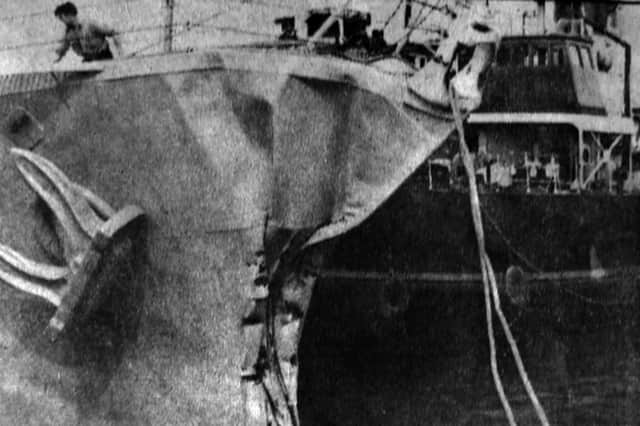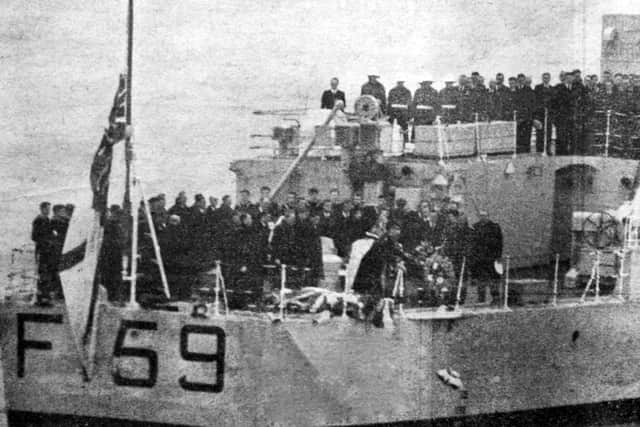More red faces in Portsmouth dockyard as three warships go crazy | Nostalgia


It ended with three warships running amok, causing damage and an Admiralty inquiry.
Tim writes: ‘It happened in South West Wall tidal basin when the fast minelayer HMS Apollo, then the Home Fleet’s flagship, and the Battle-class destroyer HMS Battleaxe broke loose and rammed the frigate HMS Wakeful.
Advertisement
Hide AdAdvertisement
Hide Ad‘Battleaxe was berthed outboard of Apollo and started to do a steam test, which somehow engaged the starboard screw. A dockyard worker who saw the incident said Battleaxe “simply took charge” of the 4,000-ton minelayer, ripped her from her berth and dragged her 300ft down the basin where Wakeful was moored, her bow pointing towards the caisson to No9 dry dock.


‘He said: “Apollo rammed Wakeful’s quarterdeck, and the frigate slewed round and hit the basin wall, folding her bow like a concertina. Had Wakeful been hit harder, she would have crashed through the caisson that was holding back the water to No9 Dock. There were men working at the bottom of the dock. There could have been a disaster.”
‘Luckily, the caisson was only slightly dented. Nobody was injured.’
Tim adds: ‘I interviewed the Captain of the Dockyard, Captain B Pengelly, who told me Battleaxe – which was due to sail next day and was unscathed – was doing a steam test to check gauges and other machinery. For some reason, steam was let into the starboard engine, turning the screw and sending the ship ahead.’
Advertisement
Hide AdAdvertisement
Hide AdDespite doubling up, Apollo’s mooring wires snapped from the jetty bollards as she was dragged by the 2,840-ton destroyer.


‘Apollo struck Wakeful (1,710 tons) on the port quarter, tearing into the screen of the mortar handling room, buckling plates in the mess deck below, which was empty. Apollo was holed in two places in her stem.’
Six months earlier, Wakeful was the focus of international attention when her quarterdeck carried the coffin of Countess Mountbatten for sea burial with full naval honours south of The Nab Tower. Admiral of the Fleet Lord Mountbatten of Burma and Prince Philip cast wreaths into the sea.
HAVANT CROSSING
The painting is from Ralph Cousins’s new booklet Paintings by Charles Roger Cotton with pictures of Havant, Rowlands Castle, Langstone and Leigh Park. Here we’re looking south through the North Street level crossing at Havant, about 1860. The station then was left of the crossing.
A message from the editor, Mark Waldron.
You can subscribe here for unlimited access to our online coverage, including Pompey, for 27p a day.
Comment Guidelines
National World encourages reader discussion on our stories. User feedback, insights and back-and-forth exchanges add a rich layer of context to reporting. Please review our Community Guidelines before commenting.